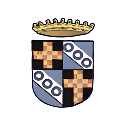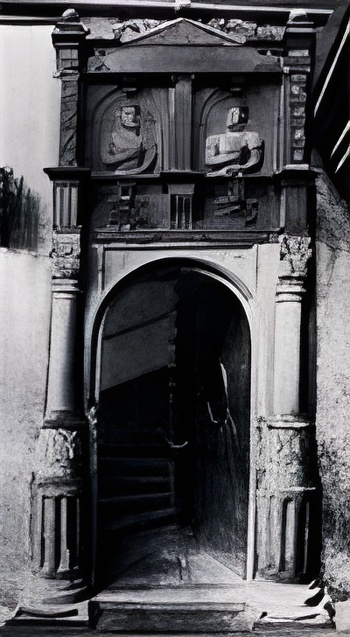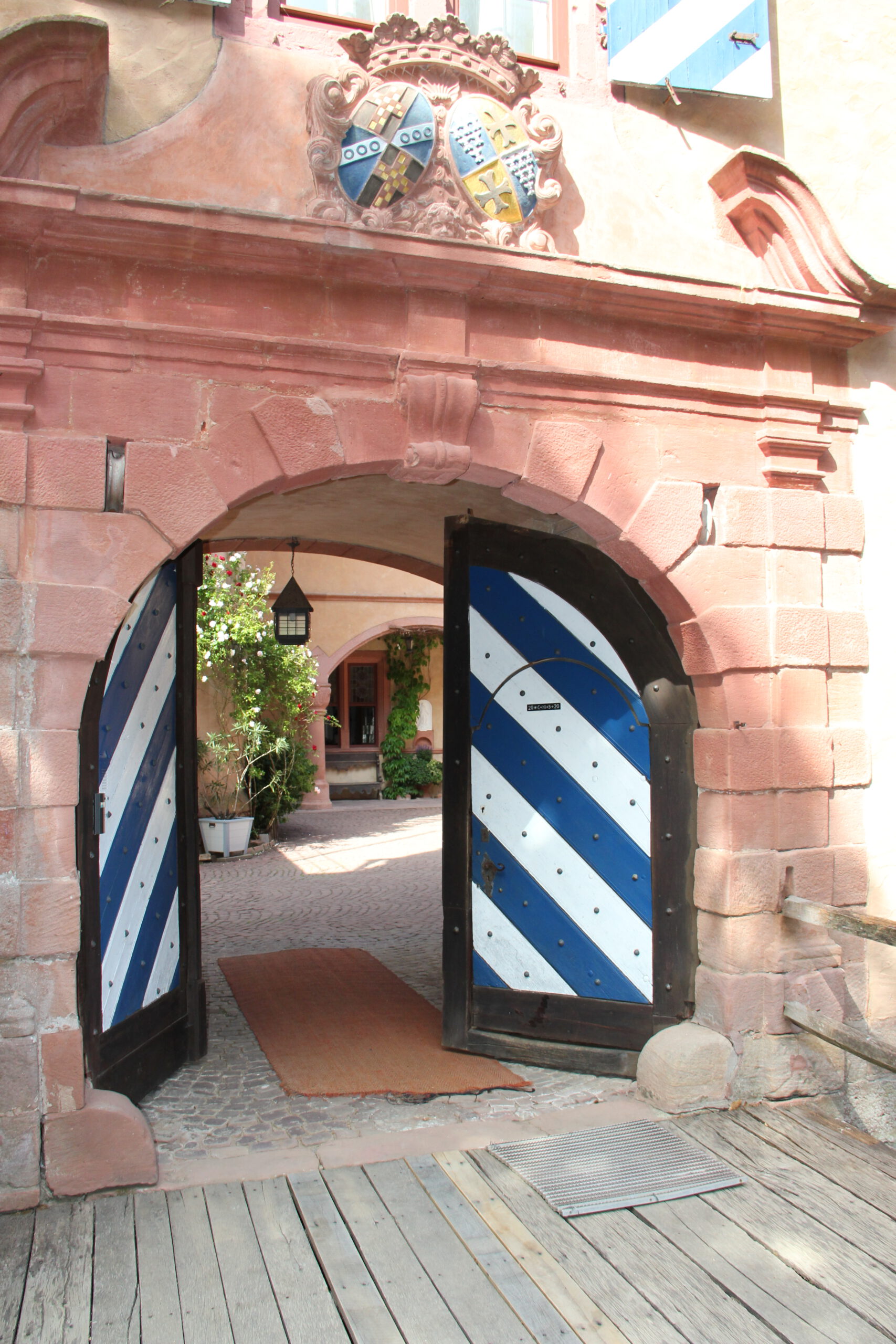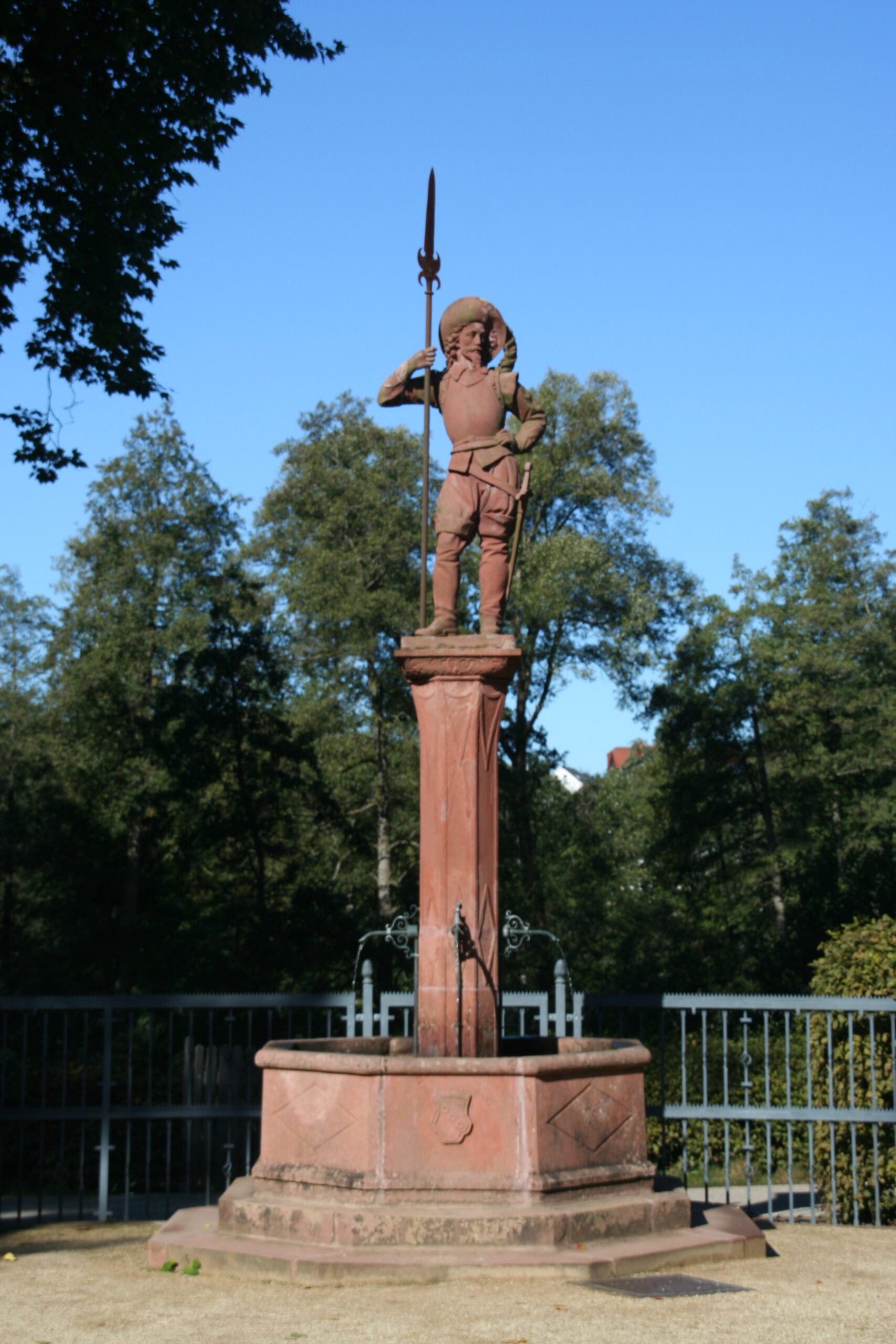Schloss Mespelbrunn

Welcome, dear monument enthusiasts, nature lovers, and wedding planners!
.
Last year, the roof of the east wing was newly covered – you can expect a beautiful, precious, and durable slate roof in traditional German style. Restoration work has been carried out on the wallpaper in the Chinese salon at the museum, and various walls have received a fresh coat of paint. We are particularly pleased with the renewed gargoyles at our soldier fountain – long live craftsmanship!
Your visit helps us finance this and other projects for the preservation of the castle. We would also like to extend our gratitude to the Unterfränkische Kulturstiftung, the Deutsche Stiftung Denkmalschutz, the Bavarian State Office for Monument Preservation, the Bavarian State Foundation, the Aschaffenburg district, the Raiffeisenbank, and of course our support association for their fantastic support.
To all hikers and cyclists: please stay on the paths, respect nature, and do not leave the notorious little bags with your pets' waste by the roadside. We want our forest to remain plastic-free. This also applies to cigarettes, glass, and other litter. Smoking is prohibited in the forest.
Our wedding room and the Chapel of Maria Schnee are available for civil ceremonies and religious weddings.
We are very much looking forward to your visit! Feel free to explore this homepage to learn more about your visit before your trip to Mespelbrunn.
Sincerely,
Your count family and all castle guides
News
Das Schloss öffnet ab dem 29. März wieder täglich seine Tore für Besucher.
Wir freuen uns auf Ihren Besuch !
History
1. may 1412
When on May 1, 1412 Archbishop Johann von Mainz gave the knight Hamann Echter the "Platz zum Espelborn" for his faithful services as electoral forester, the Spessart was a wild and undeveloped forest. Hussites used it as a stopover for their plundering expeditions and put travelers and inhabitants in fear. Therefore, around 1427, knight Hamann Echter's son of the same name preferred to build a "solid house" with walled towers out of his father's unfortified pond house. The following generations finally took the more peaceful times as an opportunity to transform the forbidding walls of a moated castle into a dreamy Renaissance palace.
Peter Echter von Mespelbrunn
The castle owes its current appearance largely to Peter Echter von Mespelbrunn and his wife Gertraud von Adelsheim, who carried out the reconstruction for 18 years until 1569. The confession of the two can be read above a side portal:
Marital love in God and faith so true,
Brings happiness and blessings anew.
We trusted in God with diligence and might,
To build this house for our own delight.
Over time, the family produced significant offspring. The most well-known was Julius Echter, who, as Prince-Bishop in Würzburg and Duke in Franconia, founded the Juliusspital and the University of Würzburg in 1576 and 1583, respectively. He also built the mighty fortress of Marienberg and shaped the church architecture of Franconia with pointed towers and gabled Renaissance buildings.
Lineage of the Echters
Trotz des Kinderreichtums Peter Echters erlosch keine Hundert Jahre nach seinem Tod die männliche Linie der Echters, da der 30 jährige Krieg wie bei so vielen Familien auch hier seine Opfer gefordert hatte.
Maria Ottilia, die letzte Echterin, heiratete 1648 Philipp Ludwig von Ingelheim aus dem Rheingau. Ihr Mann entstammte einem Freiherrengeschlecht, das später in den Grafenstand erhoben wurde. Die beiden durften Namen und Wappen mit kaiserlicher Erlaubnis zusammenfügen. Noch heute lautet der Name der Familie „Grafen von Ingelheim genannt Echter von und zu Mespelbrunn“. Sie bewohnt den Südflügel des Hauses, während der Nordflügel kurz nach Beendigung des zweiten Weltkriegs teilweise für die Öffentlichkeit zugänglich gemacht wurde.


